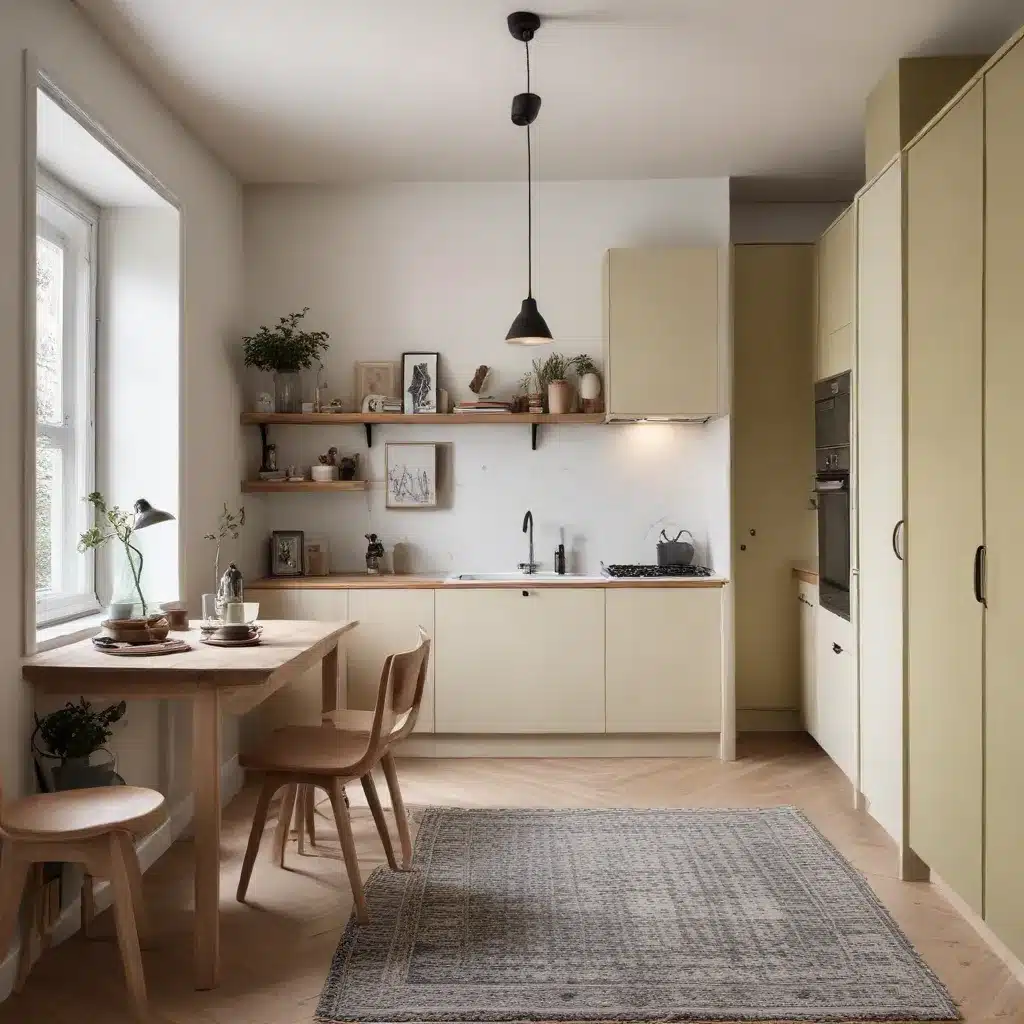
As an experienced home improvement consultant, I understand the challenge of creating a harmonious, visually appealing space, especially in smaller homes or apartments. Achieving a cohesive aesthetic can feel elusive when you’re balancing functionality, budget, and personal style preferences. However, with thoughtful planning and strategic design choices, it’s entirely possible to craft a compact interior that feels intentional, polished, and reflective of your unique taste.
Principles of Cohesive Design
Balancing Unity and Variety
The key to cultivating a cohesive look lies in striking the right balance between unity and variety. While you want your spaces to feel connected and coherent, infusing them with diverse elements and visual interest is equally important. Repetition of core design components, such as a consistent color palette, complementary textures, or harmonious furnishings, helps establish a sense of unity. Simultaneously, incorporating contrasting accents, unexpected pairings, and varied scales can prevent your home from feeling too “matchy-matchy” or sterile.
Achieving Visual Harmony
Another fundamental principle of cohesive design is creating visual harmony throughout your spaces. This doesn’t necessarily mean every room must be a mirror image of the next; rather, it’s about ensuring a seamless flow and intentional connections between adjacent areas. You can achieve this by aligning architectural details, such as maintaining a consistent millwork style or window treatments, or by strategically repeating key design elements, like a signature light fixture finish or a beloved textile pattern.
Leveraging Repetition and Rhythm
Repetition and rhythm are powerful tools in the cohesive design toolkit. Intentionally repeating colors, materials, or decorative motifs across multiple rooms generates a cohesive visual rhythm that ties your home together. For instance, echoing a dominant accent color or weaving in the same wood tone throughout various furnishings can create a harmonious flow. Establishing a rhythmic pattern with lighting fixtures, tile layouts, or even the placement of decorative objects can also contribute to an overall sense of unity.
Space Planning Strategies
Maximizing Functionality
In compact spaces, maximizing functionality is crucial to maintaining a cohesive, clutter-free aesthetic. Thoughtful space planning, strategic furniture placement, and strategic storage solutions can help you optimize every square foot. Prioritize multi-purpose pieces, built-in cabinetry, and discreet organizational systems to minimize visual noise and maintain a streamlined look.
Optimizing Storage Solutions
Ample, well-designed storage is essential for achieving a cohesive aesthetic in small homes. Incorporate integrated storage into your cabinetry, use vertical space with shelving or wall-mounted units, and strategically conceal unsightly items behind closed doors. Consistent hardware finishes and unified door/drawer styles can further enhance the cohesive feel.
Enhancing Flow and Circulation
Promoting smooth circulation and uninterrupted visual flow is key to cultivating a cohesive layout. Thoughtfully position furniture, zone rooms, and consider sightlines to ensure a natural, effortless transition between spaces. Aligning doorways, maintaining consistent flooring materials, and leveraging open concept designs can all contribute to a cohesive, user-friendly flow.
Color and Texture Coordination
Complementary Color Palettes
Establishing a harmonious color palette is fundamental to creating a cohesive interior. While you don’t necessarily need to use the same colors in every room, selecting a complementary or analogous color scheme can help tie your spaces together. Opt for a unifying “anchor” color and then build out your palette with accents that enhance visual interest without disrupting the overall harmony.
Tactile Material Pairings
In addition to color coordination, thoughtful material pairings can significantly contribute to a cohesive aesthetic. Incorporate a balance of hard and soft textures, smooth and rough surfaces, and matte and glossy finishes to add visual depth and tactile appeal. Repeating specific materials, such as natural wood, marble, or matte black hardware, across multiple rooms can also reinforce a cohesive design narrative.
Layering Patterns and Textures
While a cohesive design typically requires some degree of restraint, don’t be afraid to layer patterns and textures to add visual dynamism. Juxtapose geometric prints with organic motifs, or balance bold, graphic textiles with subtle, neutrally-hued woven elements. The key is to ensure a sense of harmony by tying the various patterns and textures back to your core color palette and material selections.
Lighting and Styling Techniques
Illuminating Key Features
Lighting plays a crucial role in cultivating a cohesive aesthetic, both functionally and aesthetically. Strategically positioning task lighting, ambient fixtures, and architectural accent lights can help highlight key architectural features, draw the eye to focal points, and establish a cohesive rhythm throughout your home. Opt for a unified lighting finish, such as brushed brass or matte black, to reinforce visual harmony.
Curating Decorative Accents
Thoughtfully curated decorative accents can significantly contribute to a cohesive design. Group collections of vases, artwork, or other objects to create visual “moments” that tie rooms together. Additionally, consider repeating specific decorative elements, like a particular plant variety or a favored material, across multiple spaces to forge intentional connections.
Creating Focal Points
Establishing clear focal points within your compact interior can help anchor the overall design and maintain a sense of cohesion. Whether it’s a statement lighting fixture, a bold piece of artwork, or a striking architectural detail, these visual anchors serve to unify the space and guide the eye, preventing the room from feeling disjointed or haphazard.
Crafting a cohesive look in a small home or apartment requires a thoughtful, intentional approach, but the payoff is well worth the effort. By strategically balancing unity and variety, optimizing your space, coordinating colors and textures, and curating your lighting and styling, you can transform your compact interior into a harmonious, visually captivating haven that reflects your unique style. For more inspiration and practical guidance, be sure to visit Reluctant Renovator, a treasure trove of expert advice on budget-friendly projects, family-friendly designs, and time-saving renovation hacks.



